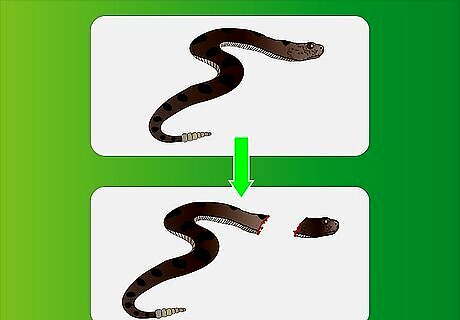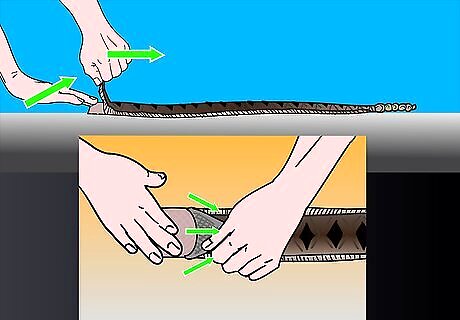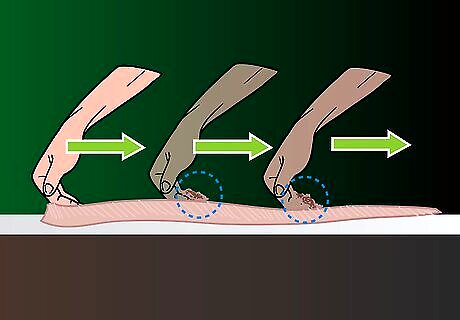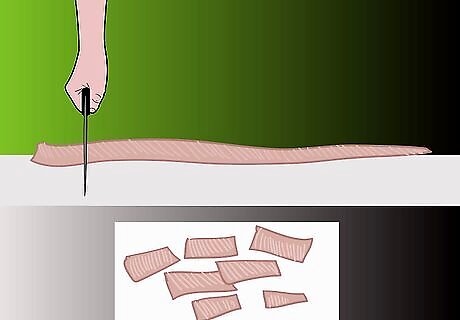
views
X
Research source
The following steps will tell you how to skin, eviscerate, and prepare a snake for cooking. If the subject is not a rattlesnake, these instructions should still be applicable, with the exception of the ones regarding the rattle.

Remove the head, unless it is to be used for taxidermy purposes. Most taxidermy projects require a different, more difficult method of skinning, but that method is not the focus of this article. It is always best to work with a decapitated snake because even "dead" snakes have been known to strike, and the fangs are still quite dangerous. By removing the head, you are removing all venom.

Wash the outside of the snake thoroughly. Soapy water or even plain water will work well. Just make sure the soap is completely rinsed off of the snake.

Make an incision down the centerline of the belly, through the skin only, all the way from the stump where the head was attached to the base of the rattle. On most snakes, there is a smaller belly scale covering the cloaca. In the picture, this is the last cream-colored scale before the darker tail scales. Simply split this up the middle just like the rest of the scales.

Pull the skin from the flesh by hand, again beginning at the head end, using even tension on the skin to avoid tearing. Be sure to separate the skin from the membrane underneath right at the head end. You want clean skin with nothing attached to it. The hide should be loose enough that it easily detaches from the carcass. If the skin is a bit "tight", a knife may be used to carefully free it in the tough places. Peeling without the use of a knife can usually be accomplished all the way to the cloaca. When the cloaca is reached, it is usually necessary to free it from the skin by cutting around the opening with the knife. Continue skinning to the base of the rattle. The attachments to the muscles that control the rattle generally make the hide harder to pull off. A knife must be used in this area if the skin is too tight to peel off, as the skin is rather delicate in this section.Skin a Snake Step 4Bullet1.jpg After the skin is completely freed from all but the rattle itself, cut through the tail as close to the base of the rattle as possible. If the skin is to be saved with the rattle attached, it helps for the piece of flesh attached to the rattle to be small. Skin a Snake Step 4Bullet2.jpg Don't fret too much about totally removing the flesh below the cloaca and above the rattles (basically the black and white banding on rattlesnakes). It is almost impossible to completely remove the skin from the flesh in this area. It will dry up easily.Skin a Snake Step 4Bullet3.jpg Constrictor snakes such as bull and rat snakes cannot be "peeled". Their skin is attached with many muscle attachments over the full length of the body. Cutting through them is tedious as it is hard to get the skin free from the flesh and very easy to cut or tear the skin.

Remove the viscera (innards) by hand, starting at the head end, using a scooping motion with the hand if the organs are difficult to remove. Care must be taken near the lower digestive region or the snake might excrete unappetizing substances on the meat.

Rinse the now eviscerated and skinned snake in cool water to remove any excess blood or other undesirable substances. Membrane and fat are often rather difficult to remove from the ribcage and backbone and can be cut free at this time.

Cut the snake into segments that are the most convenient length for the desired method of cooking.



















Comments
0 comment